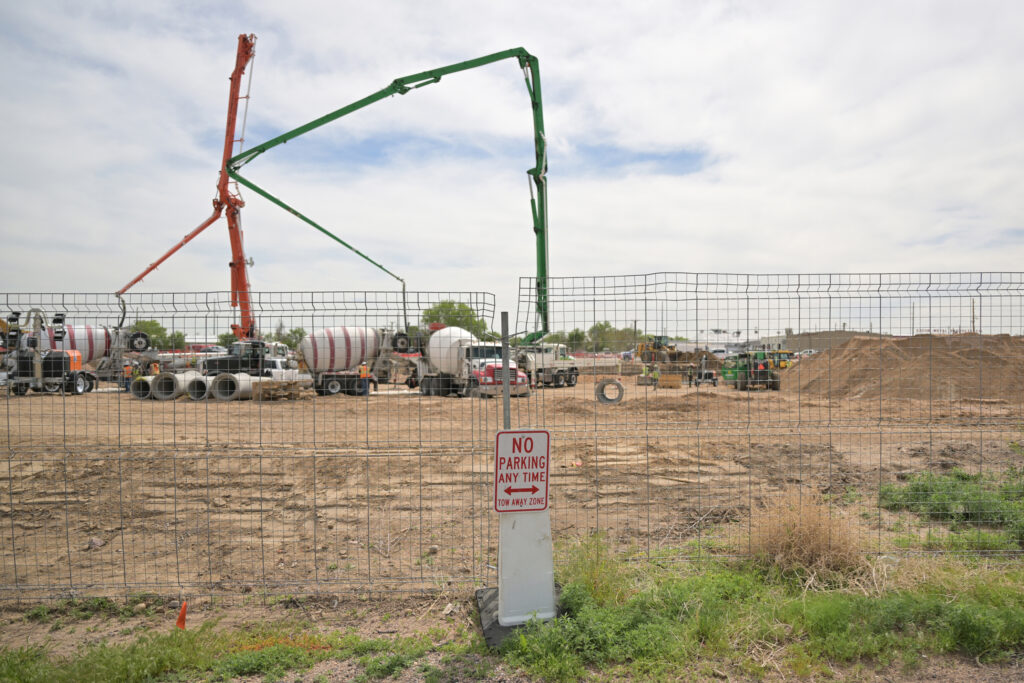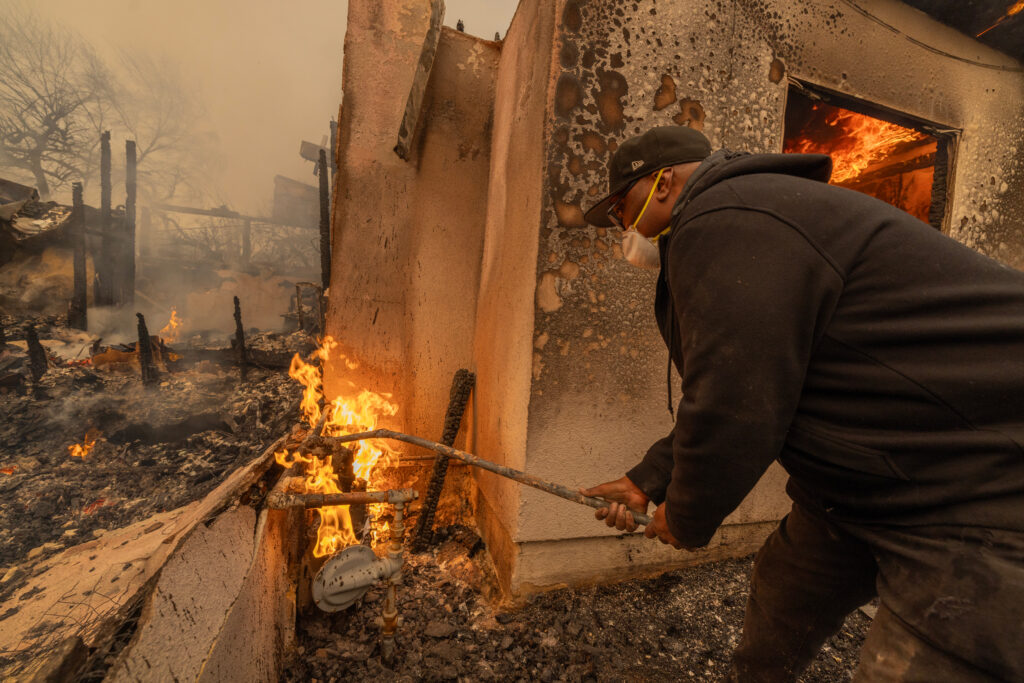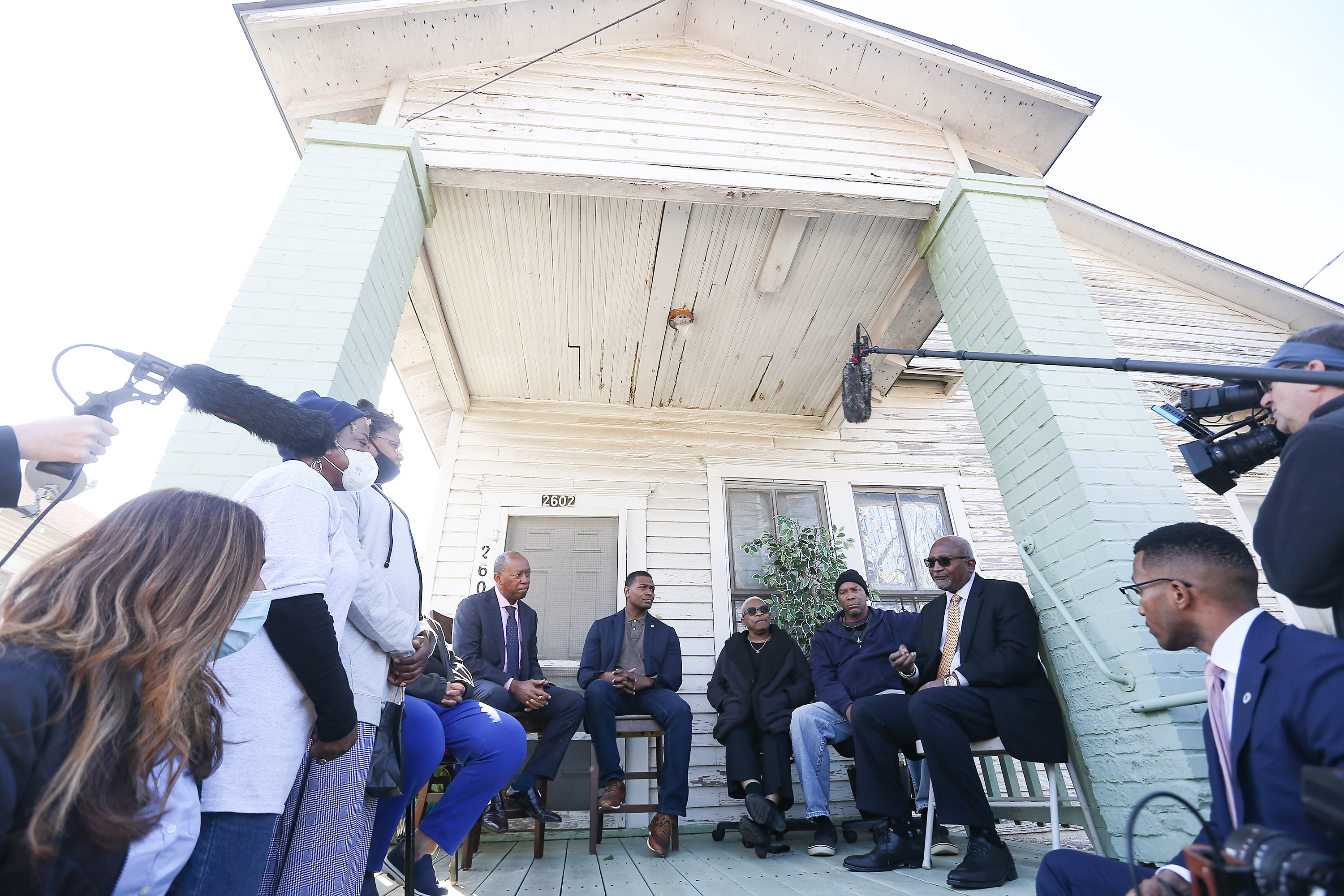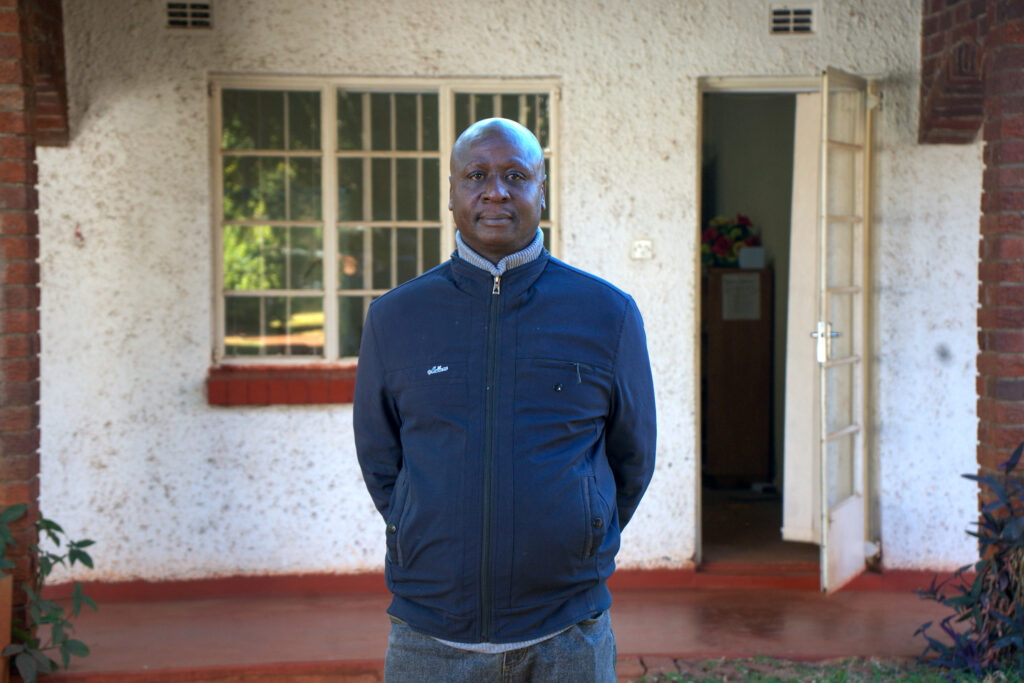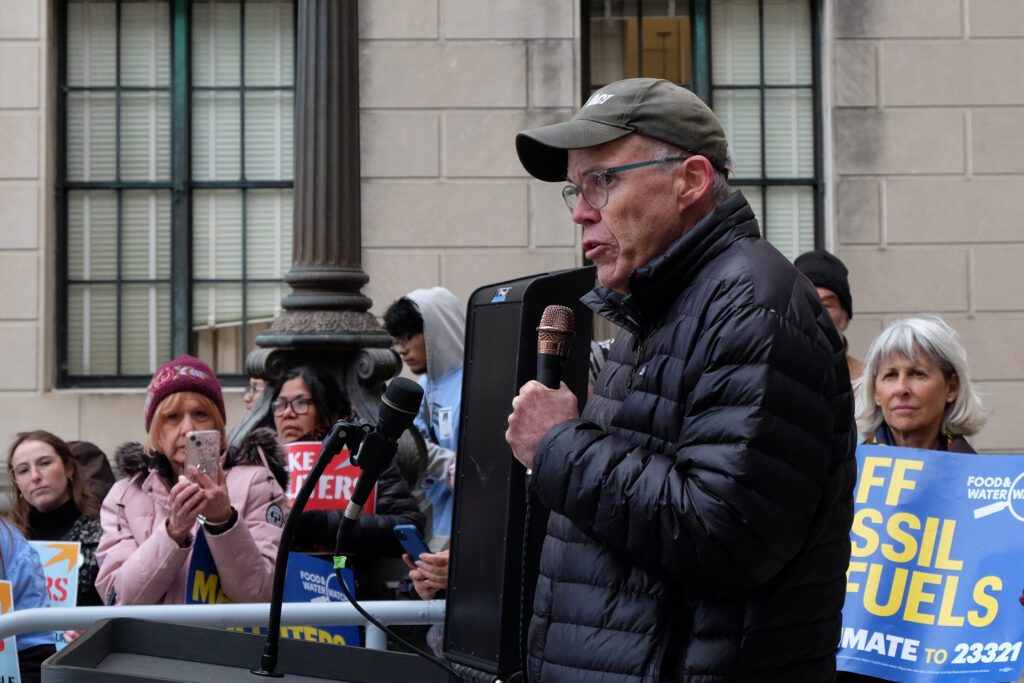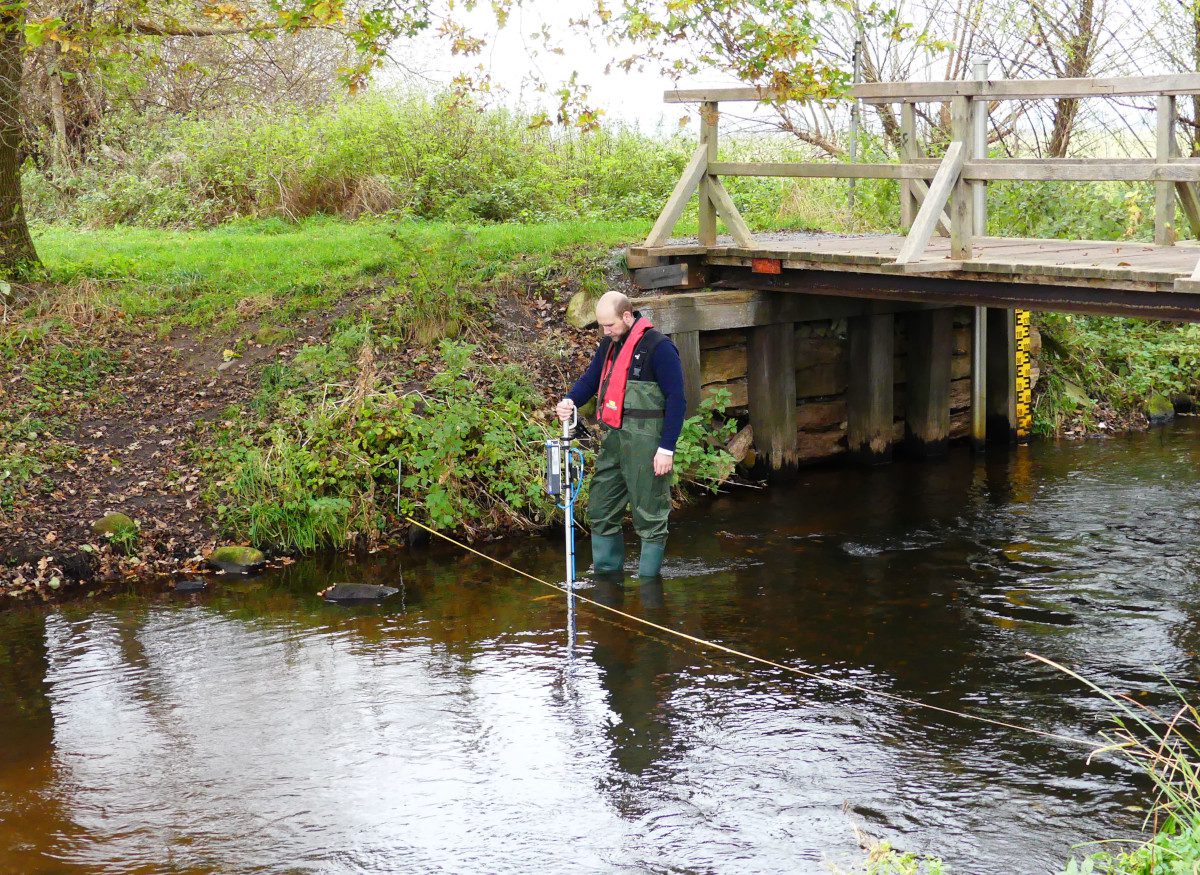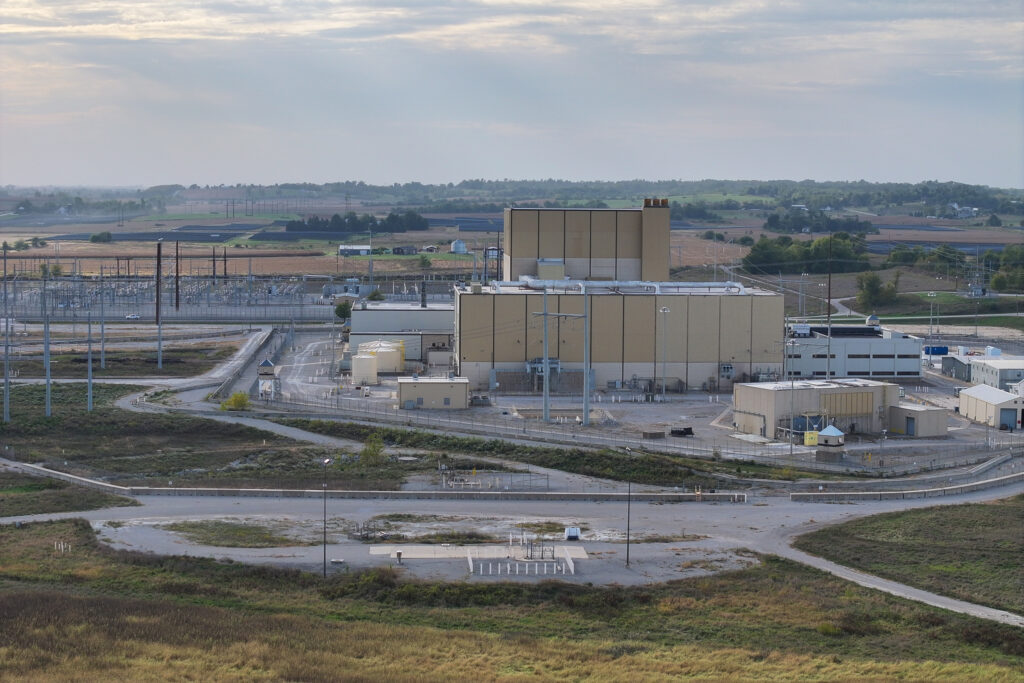MINDO, Ecuador—Natalia Greene ducks her head underneath the fronds of a giant fern. It is pitch black in the Chocó Andino cloud forest and Greene is searching for spiders, frogs and other nocturnal creatures.
“Ah, found one!” she shouts, steadying the beam of her flashlight on a sinewy spider.
Greene marvels at the tiny tarantula with focused intensity before declaring that the insect is a species she’s seen before.
Finding species previously unknown to humans is not uncommon here in Ecuador. The Nevada-sized nation, which straddles the equator and spans a multiplicity of ecosystems from the alpine Andes mountains to the low-lying Amazon rainforest, is one of the most biodiverse places in the world. It is home to 20-foot long anacondas, spectacled bears and the marine iguana.
We’re hiring!
Please take a look at the new openings in our newsroom.
See jobs
For Greene, an Ecuadorian political scientist and long-time environmental activist, searching for new plants and animals isn’t merely a hobby—each one is a potential client.
Greene is one of the leading protagonists behind Ecuador’s rights of nature movement. In 2008, Ecuador became the first country in the world to constitutionally enshrine the recognition that nature, like humans, has inherent rights. Among them are the rights to exist, flourish and regenerate.
Recently, Greene helped represent the longnose harlequin frog in court to defend those rights. That frog, known (of course) for its long, pointed nose, was thought to be extinct. But its rediscovery in 2016 gave advocates an opening to bring one of Ecuador’s landmark rights of nature court cases.
As plaintiffs, the frogs and other endangered species squared off against Ecuador’s environmental ministry and two industrial mining companies operating in the Intag Valley’s cloud forest, a high-altitude rainforest with niche habitats at varying elevations.
The frogs prevailed, with Ecuador’s Constitutional Court ruling that the copper mining project at issue violated the frogs’ rights, and in particular their rights “to have their existence fully respected,” which requires that the government adopt precautionary measures to avoid species extinction. The ruling essentially flipped the parties’ burden of proof, requiring that the government and mining companies prove the absence of harm, rather than advocates having to prove that harm has happened.
It is a distinction that can make an enormous difference in the outcome of a lawsuit and for avoiding harm to nature in the first place. In the Intag Valley case, the court revoked the mining companies’ environmental license, ruling that it had “very serious methodological issues” that threatened the frogs’ and other species’ rights to exist.
The ruling is one of over 70 Ecuadorian court cases involving the rights of nature. While roughly 30 other countries have some form of recognition that nature has rights, no other nation has come close to Ecuador’s growing jurisprudence on the issue. For that reason, Greene often refers to Ecuador as a “living laboratory” for the rights of nature.
Walking with her through the Mindo Valley, part of the Chocó Andino cloud forest, it’s easy to see why Ecuador has emerged as the bellwether for the movement. The forest is teeming with life in every direction, from plump, wild citrus fruits to hummingbirds of every color and gushing rivers. Nature is in all of her glory, making it easy to understand what Greene means when she says: “Of course nature has a right to exist, how can it not?”
Citing their constitutional rights, human guardians representing wild animals, forests and rivers have sued banana producers, hydroelectric companies, mining operators and oil companies in Ecuador. The majority of the cases have resulted in favorable rulings for nature. Like the Intag Valley case, other court rulings implementing the rights of nature have shuttered multi-million dollar mining projects: in 2021, the Ecuadorian Constitutional Court ordered the federal government to revoke licenses granted for mining exploration inside Los Cedros, a protected natural area, saying: “[T]he risk in this case is not necessarily related to human beings…but to the extinction of species, the destruction of ecosystems or the permanent alteration of natural cycles.”
Months later, the same court ruled that wild animals possess distinct legal rights, including to exist, to develop their innate instincts and to be free from disproportionate cruelty, fear and distress.
Yet, such landmark rulings have not been the end of the story for Ecuador. Communities across the nation, including here in the Mindo Valley, are not just imagining sustainable ways of living, they’re making them a reality through ecotourism, permaculture and biodiversity projects. Greene says the country’s constitutional recognition that nature has rights has contributed to a cultural shift among some groups in the country. As evidence, she points to two referendums carried out last year where voters chose to block mining here in the Chocó Andino and to stop oil production in part of the Amazon rainforest.

“We now have a whole generation of young people who have grown up only knowing that nature has rights,” Greene says. “The law has influenced peoples’ understanding of nature and that is very powerful.”
Still, the developing country is in many ways a paradox. The nation’s economy has long run on oil extraction and its newly elected president, Daniel Noboa, has aggressively courted investment in the country’s mining sector. Ecuador is rich in copper, gold and silica sand, along with other metals and minerals. Worldwide, the mining industry is expected to grow six-fold by 2040 compared to current levels, largely driven by wealthy countries’ demand for energy transition minerals. Earlier this year, Noboa became the first head of state to attend the so-called “Super Bowl” of mining conventions, hosted by the Prospectors and Developers Association of Canada. He has touted the mining sector as a means to create jobs in a nation being ravaged by criminal activity. In recent months, drug trafficking and related criminal ventures, including illegal mining, have exploded across the once tranquil nation. For Greene, drug trafficking cannot be combatted without addressing illegal mining, which she says is funding traffickers.
Last October, as Ecuador marked 15 years since its rights of nature recognition, Greene helped organize a series of events to commemorate the anniversary, reflect on how the movement has progressed and where it’s going—including how to confront unforeseen challenges like illegal activity. One of those events had to be postponed until March of 2024 because a presidential candidate was assassinated while leaving a campaign event.
Recently, I sat down to talk with Greene, the global coordinator for the Global Alliance for the Rights of Nature (GARN), about what a decade and a half of nature’s rights has meant for Ecuador and where the movement is going. Our conversation below is lightly edited for length and clarity.
First, for people who aren’t all that familiar with the rights of nature movement, can you say a few words about what it is?
Nature throughout the world is largely considered an object that we exploit for our use. It is not considered a subject that has rights that we have to protect. When we change our thinking and understand that nature is a source of life, that we as humans are part of nature, then the whole system can change.
Rights of nature brings a new paradigm, it is an idea, but it is working on the ground in Ecuador and in other places around the world. Panama and Bolivia have passed national rights of nature laws. Ecosystems in New Zealand, Bangladesh, Spain, Colombia and other places have had their rights recognized. We can’t keep saying nature is an object that you exploit. It is a subject you protect and that must be reflected in our legal systems. This is happening and it’s working. In Ecuador we have had many victories and the way people relate to nature is changing.
But we can’t just celebrate those victories and leave it at that. We have to ensure each case we win is enforced. Right now, we face some enormous challenges in that regard.
Let’s get into those challenges—what are they?
The most important part of any court case is the enforcement of the judgment. But many verdicts in cases we’ve won are not enforced. This is a big problem.
We are creating a new area of law and what it means to comply with a rights of nature ruling is being fought over. The Los Cedros judgment [revoking mining permits in a protected area] is one of the more clear cut cases. Part of the ruling says that mining is prohibited in protected forests. There is no way for companies to go around it—companies cannot obtain mining licenses to operate in that protected forest and so enforcement of that judgment is easier.

An example of a more difficult judgment is one of Ecuador’s first rights of nature cases involving the Villacamba River. Back in 2011, the provincial government of Loja was carrying out a project to widen a road alongside the river. Landowners sued the government, claiming the construction was depositing large amounts of rock and sediment into the river, violating the river’s rights. A provincial court agreed and ordered the government to remediate the river as a remedy. It was a great judgment. The government put up signs saying to protect the river, and stopped dropping excavation materials into the river, but never remediated the existing damage. No remediation has been done, to date.
There were similar implementation problems with the judgment in a case involving the A’I Cofán Indigenous peoples. The A’I Cofán won a landmark judgment that invoked the rights of nature and affirmed the community’s right to free, prior and informed consultation. The ruling required that more than 50 mining concessions in their territory be revoked. But the communities affected have not been able to enforce the judgment.
So enforcing rights of nature case rulings are proving to be a challenge. Are there specific solutions lawyers and activists are targeting to overcome this?
One thing Ecuador could do, which is what is done in Colombia, is for the Constitutional Court to have a “follow up commission” to ensure its judgments are complied with.
We don’t have that in Ecuador and so there is no enforcement from the state. The Constitutional Court doesn’t have an enforcement arm and so making sure judgments are enforced falls to nongovernmental organizations or directly to communities. We don’t have enough funds to hire lawyers for all the cases. The judgments, they are beautiful, but you need a budget to see these cases through.
Money is a big problem for other reasons. After we won the Los Cedros case, some of the communities that were eager to get money from mining operations were disappointed. That loss of income really hurt those communities. They need alternative forms of employment. The Los Cedros Reserve is looking to expand its research and housing facilities but this needs investment.
The Covid pandemic and the security situation in Ecuador has made the problem worse. Those things have also hurt Ecuador’s tourism industry and there are less funds available for environmental research. Tourism is an important source of income for the country and has been affected by the pandemic and now by the security situation. We need that research for the rights of nature to flourish. When we bring these cases, we need a scientific basis for our claims.
I understand that you’ve been working on some innovative programs to develop scientific research in support of rights of nature cases. What has that entailed?
We have a paraecologist program that we’ve been working on, with Mika Peck with the Ecoforensic project, and with Manolo Morales from ECOLEX, which has a paralegal project. The idea is that Indigenous and other front line communities know their territories well and many want to defend those areas, but they aren’t lawyers or ecologists.
The program teaches people in those communities about the legal system and how to recognize and identify species. They learn things like how to connect with lawyers, state institutions, ecologists and NGOs. We also teach them how to work with researchers to blend together traditional science and local knowledge. Communities help researchers carry out the scientific work necessary to defend their territories through the legal system, support legal cases and become expert court witnesses.
For example, if a community notices something is wrong with their water, they will learn how to conduct a water test. They learn how to identify species. If they identify new species, that could be used as a basis for a rights of nature case. Frogs, in the Intag Valley case, became our allies. We went to court on behalf of a newly discovered species of frogs and won, stopping a mining project.

There are 244 mining concessions throughout Ecuador’s protected forests; we don’t have the volume of scientific information for those places that we had on Los Cedros where research was ongoing for 30 years and resulted in many published papers on monkeys, frogs, orchids and other species. Gathering biodiversity information for other cases is key and training paraecologists is one step in that direction.
The other thing we’re doing is training peritos, which are expert witnesses. To become an expert witness you must go through training and be recognized by the state to participate in trials. We’ve brought in community members to testify in court cases and judges have excluded their testimony, ruling that the person is not an expert witness. We have been carrying out training for new peritos and we now have a list of eligible expert witnesses.
Some of Ecuador’s rights of nature case law has woven together nature’s rights with other legal principles like the rights of Indigenous communities. Another is the precautionary principle, which holds that absent adequate scientific evidence, it is better to avoid certain risks that could lead to irreversible damage to ecosystems. What is the significance of that?
The Los Cedros case took a step forward on the precautionary principle. A big part of our strategy is that we want to avoid damage to ecosystems in the first place—not come in after it has been badly harmed. In the Los Cedros case, the judges received more than 70 Amicus Curiae briefs from scientists and other experts explaining to the court what was happening to the cloud forest on a multiplicity of fronts. That made the potential harm very real and concrete for the court. This brings us back to what we were talking about before—having scientific evidence and experts to educate judges is so important in these cases.
In the Alambi River case, the river already had a hydroelectric dam and the electric company wanted to build a second dam. The legal strategy was to outline the cumulative impacts on the river. This is also important. Many times, scientists try to understand impacts on nature by understanding one effect in isolation. But the cumulative effect of dams, pollution and other activities can, together, have exponential impacts that aren’t well understood. The judges in the Alambi River case set an important precedent because they talk about the cumulative effect of both dams. The river won at the trial court and the case has been appealed and is currently pending before a provincial court.
Illegal mining seems to have exploded in Ecuador in recent months. How is this affecting communities and nature throughout the country?
Many times what happens with mining in Ecuador is that illegal miners will operate in an area where there is supposed to be a legal mining concession. Communities are very often divided on being pro- or anti- mining. Those who are pro-mining work with the industrial mining companies and when illegal operators come, those pro-mining members of the community feel that the illegal miners are stealing their gold. But the concession owners often don’t step in to stop the illegal activity because they’re part of the illegal activity. With illegal mining, they don’t have to give any profits or taxes to the state. Instead they can just remove the gold and sell it.

It’s also very hard and dangerous for communities to hold illegal miners accountable. We know where illegal mining is happening, you can look at maps and see where rivers in the Amazon are being destroyed by their operations. But the government doesn’t do anything. Often, the ministries in the municipalities are in on it. The illegal miners know when enforcement is coming. All of this is related to the drug trade. Big bands of drug traffickers are cutting down trees, they have operations in the forest and people living there are afraid. It’s one thing to fight industrial mining where you’re fighting the state and companies. But now communities are fighting narcos, and the situation is much more dangerous.
Oil extraction is a different situation altogether. It has to be done, for the most part, legally. You can fight the state and companies. But with mining, it comes with illegal activity, the drug trade and narcos. Our fiscalia (federal prosecutor) has launched a big effort to try to demonstrate the connections among narcos, judges, municipal officials—it is all over the place, spreading like a cancer. Ecuador’s federal prosecutor is now leading a big operation on this called “metastasis.”
This is largely why so many Ecuadorians are supporting our president, Daniel Noboa. He declared that we’re in an internal war with the drug traffickers. It is real, it’s happening, but many people feel that Naboa is taking advantage of the situation to raise taxes and force through other measures that are unpopular.
Noboa has said that mining will be the “engine of national development” and he tried to overturn our constitutional prohibition on international arbitration by including a question on it within a referendum mainly dealing with national security. This was part of his broader effort to attract more investment in Ecuador’s mining industry without understanding how damaging this can be to a country that depends on tourism and the richness of its biodiversity.
In April, you attended a handful of rights of nature related events throughout the United States. As you know, the U.S. rights of nature movement has largely been stilted because of legal, political and cultural barriers. What has the experience been like for you to talk about the rights of nature in the United States?
It’s nice to come out of Ecuador and share our experience because I feel that people are thinking that the rights of nature movement is failing. But it’s not, we’re winning cases. Yes there are obstacles with enforcement, but we’re doing so much more beyond the legal process.
Last year we won two major consultations, or referendums, that built upon the rights of nature movement. The first was the Yasuni-ITT initiative that required drilling end in a portion of Yasuni National Park, and the second was the regional Chocó Andino Referendum, [where voters in the Quito area chose to block all mining in the Chocó Andino Reserve located just outside the capital city]. About 59 percent of Ecuadorians voted to keep oil in the ground in Yasuni and 69 percent of Quito voters chose to ban metal mining around the city, and they did that because their mindset has changed about nature. We’re exporting these ideas to the world and collaborating with people to do that.
For example, we’re working with the More Than Human Rights project in New York City to bring scientists together with Ecuadorian communities to better understand how the forest is alive and communicating in different ways. Science is finally catching up to what Indigenous peoples have been saying all along—that nature is alive and interconnected.
These sorts of developments make our rights of nature cases stronger because judges tend to listen only to people with degrees. But if scientists can better understand what communities are saying, the knowledge they have, then we can bridge those gaps. Community based knowledge is so important.
That knowledge has opened the door for judges to start asking bigger questions. They used to just ask: was there a violation of the terms of a license or permit? But now, they’re asking things like: what does it mean for an ecosystem to naturally evolve? To answer those types of questions requires an interdisciplinary conversation, and that’s how nature works. It’s complex, and we need a multiplicity of voices finding answers to these questions.
The United States is an interesting place for me to come to because there are about three or four states that have or are trying to preempt local rights of nature laws. But community activists keep pushing for those laws. As Mahatma Gandhi said, “first they ignore you, then they laugh at you and then you win.” If states are fighting these laws because they have seen how the laws can turn around a failing system, then rights of nature activists are on the right path.
This story is funded by readers like you.
Our nonprofit newsroom provides award-winning climate coverage free of charge and advertising. We rely on donations from readers like you to keep going. Please donate now to support our work.
Donate Now
Looking forward, what are you and other rights of nature advocates going to be focused on?
We are planning to do a Rights of Nature Tribunal session in September at Climate Week in New York City. It will be related to the end of the fossil fuel era. It will focus on front line communities and how they have been affected by fossil fuel production.
A second part to that tribunal will take place in Toronto at the Prospectors and Developers Association of Canada conference. There we’ll focus on mining and the energy transition.
Mining companies are branding themselves as “green” by saying they’re providing the minerals and metals to make batteries and electric vehicles for the Global North. But in Ecuador and other countries in the Global South, we’re again paying for the north’s high consumption habits. The energy crisis and fossil fuel crisis cannot be solved by destroying biodiversity with mining. It’s a false solution.
We want to present the judgments of those two cases at the 2025 climate change COP in Belem, Brazil. Brazil will be a very important COP because we will have had the preceding COPs in Dubai, Egypt and Azerbaijan—three locations with no space for civil society.

Locally in Ecuador, we’re watching developments in Yasuni closely to ensure the ITT referendum is enforced. We’re also working to enforce a big case on turning off gas flares. A group of young girls won a judgment against the Ecuadorian and local governments, requiring that more than 400 gas flares in the Amazon rainforest be phased out. We know they’re not complying with the judgments.
Most of the cases we will pursue in the future in Ecuador will likely deal with mining. A lot of people still don’t connect mining with the environmental destruction it causes. But in Ecuador, it’s impossible to ignore how devastating it is because we see the impact of mining first hand. Let’s be aware of that—the energy transition is in a way the new colonization of South America.
So we’re training more communities, we’re recruiting more lawyers. Right now, we have a list of just 25 rights of nature lawyers. We need more. Obviously we need funding to do that. And we’re making sure that existing judgments are complied with.





